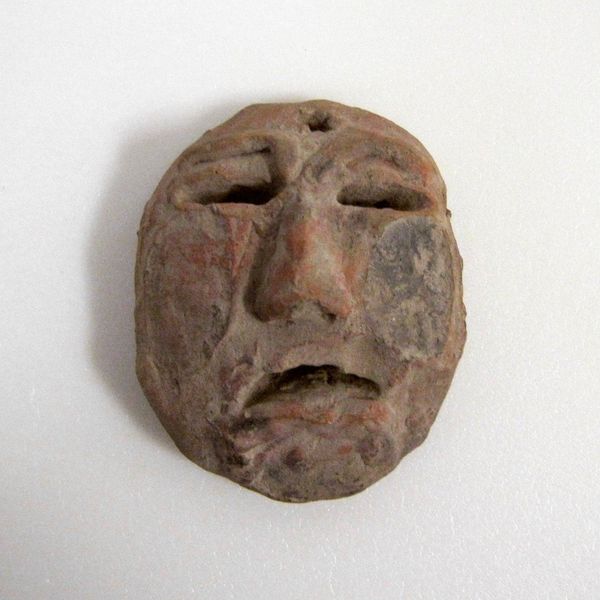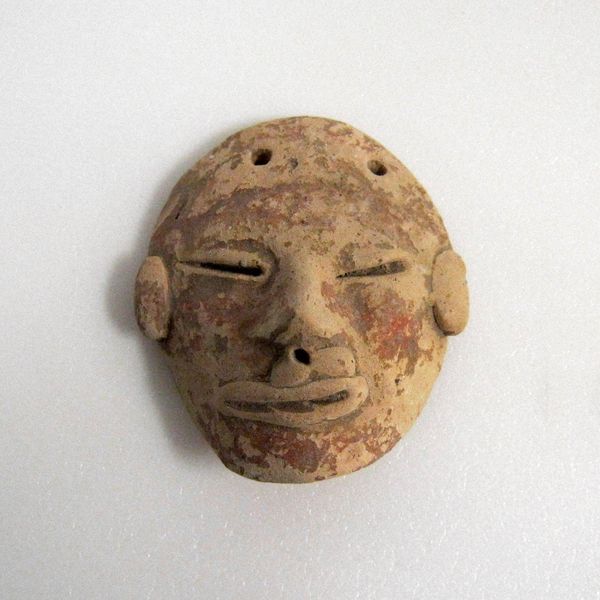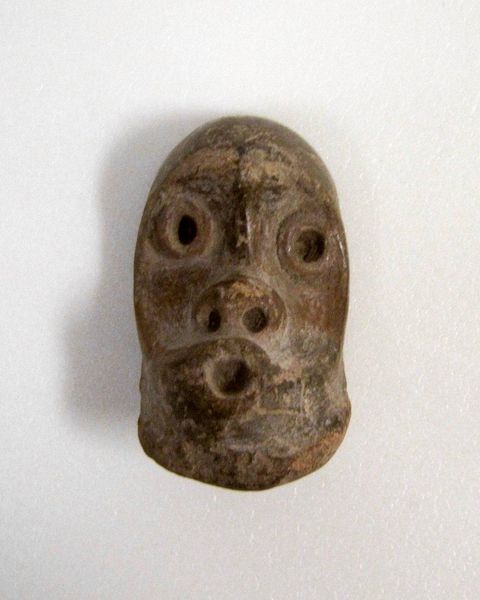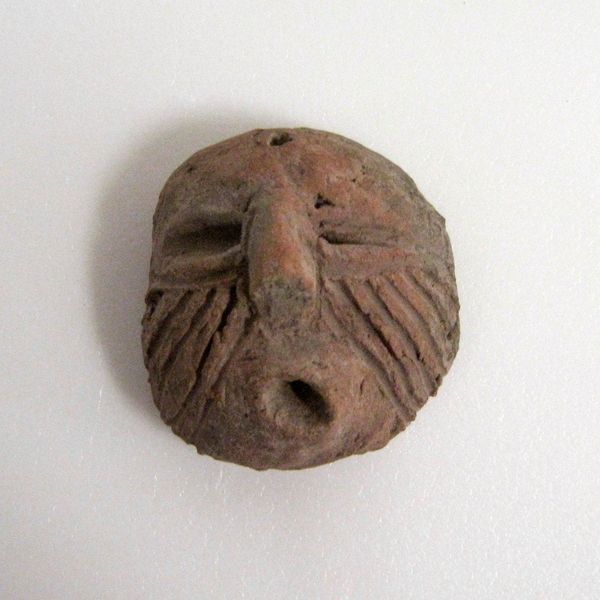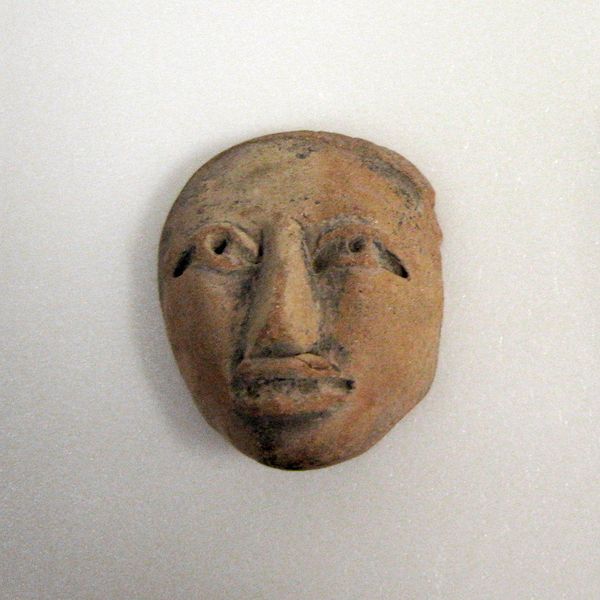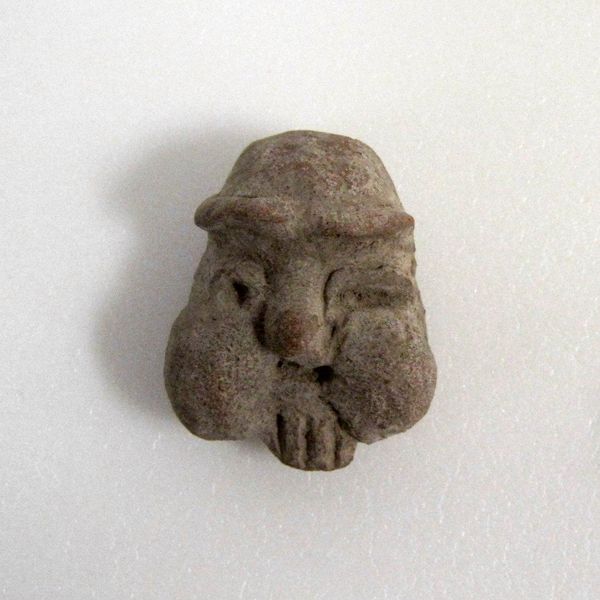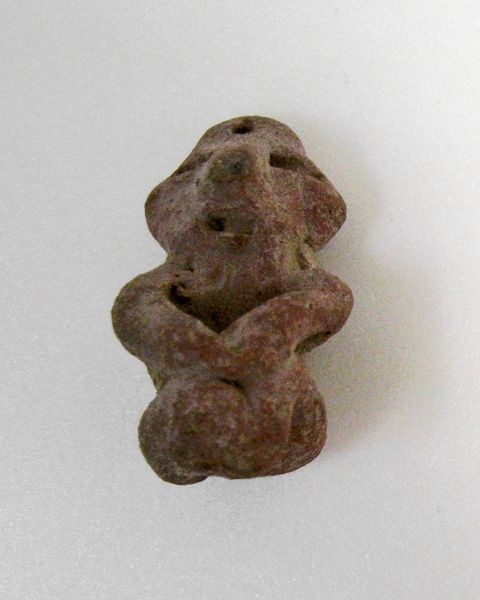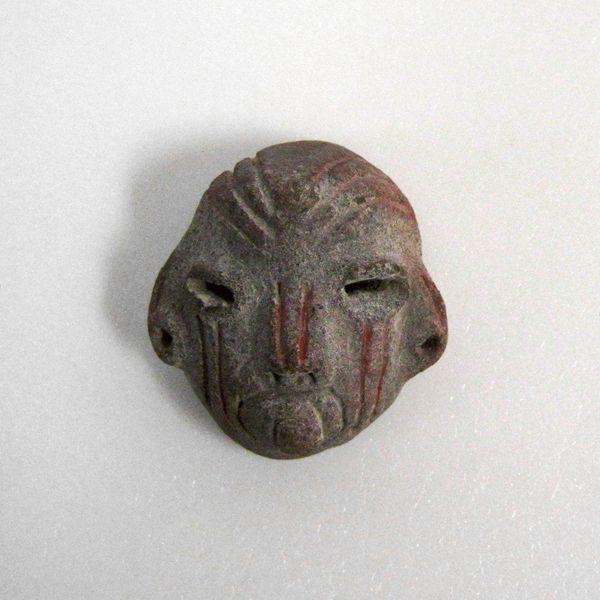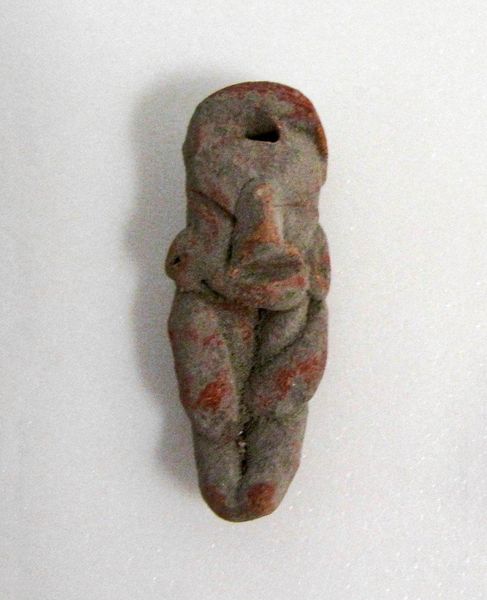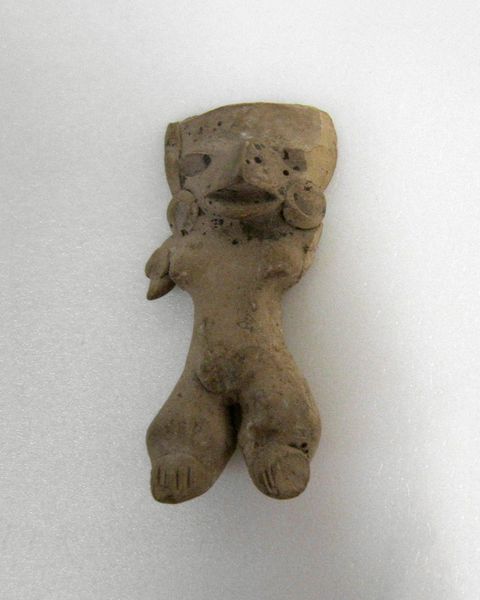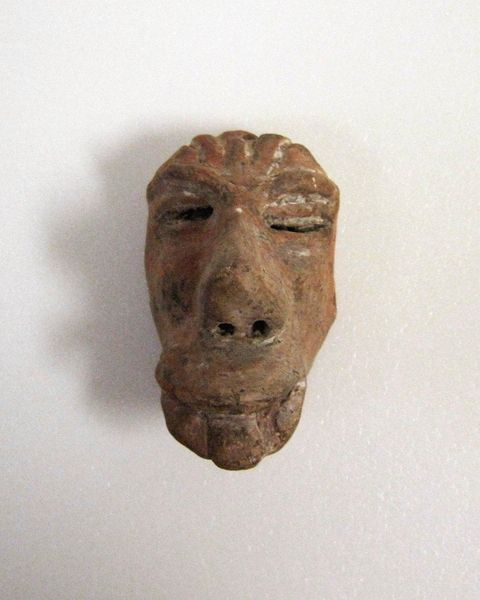
ceramic, earthenware, sculpture, terracotta
#
sculpture
#
ceramic
#
earthenware
#
sculpture
#
terracotta
#
miniature
#
indigenous-americas
Copyright: Public Domain
Curator: This small earthenware mask dates to around 1500 and originates from the Tlatilco culture. You can find it on display here at the Minneapolis Institute of Art. Editor: It's so diminutive! The earth-toned ceramic gives it a tactile quality, almost like sun-baked clay. The holes perforating the face give it an intriguing, unsettling aspect. Curator: Exactly, it’s the means by which this sculpture was crafted that grabs me. To consider the hands that carefully formed and fired this object is remarkable. We have to acknowledge the labor involved in excavating the clay, processing it, then shaping it into the final form. Editor: And what purpose did it serve? Knowing these were people deeply connected to the earth, could it have been part of a ritual, worn to connect with ancestors or spirits? The act of masking often has connotations with transformation, of taking on a new identity. I wonder if it challenges preconceived notions of portraiture within the context of Indigenous-Americas. Curator: The mask raises fascinating questions. How did the artist secure and manage the materials required for its creation? Furthermore, we must consider how economic and social conditions may have driven or determined who got to create, consume, and interpret objects like this. Editor: Indeed. And think about the societal implications around miniature objects; Were they accessible only to privileged groups or for mass dissemination? Beyond artistry, its materiality inherently intertwines it within wider intersectional discourses on power, access, and meaning-making. Curator: I find myself reflecting on the artistry infused within even quotidian tasks. The way available material shapes possibilities, dictates expression. I hope audiences start viewing labor in this art as art in itself. Editor: It certainly gives pause, inviting contemplation regarding function, belief structures, and our shared histories. It truly does serve as a tiny but potent artifact.
Comments
No comments
Be the first to comment and join the conversation on the ultimate creative platform.
